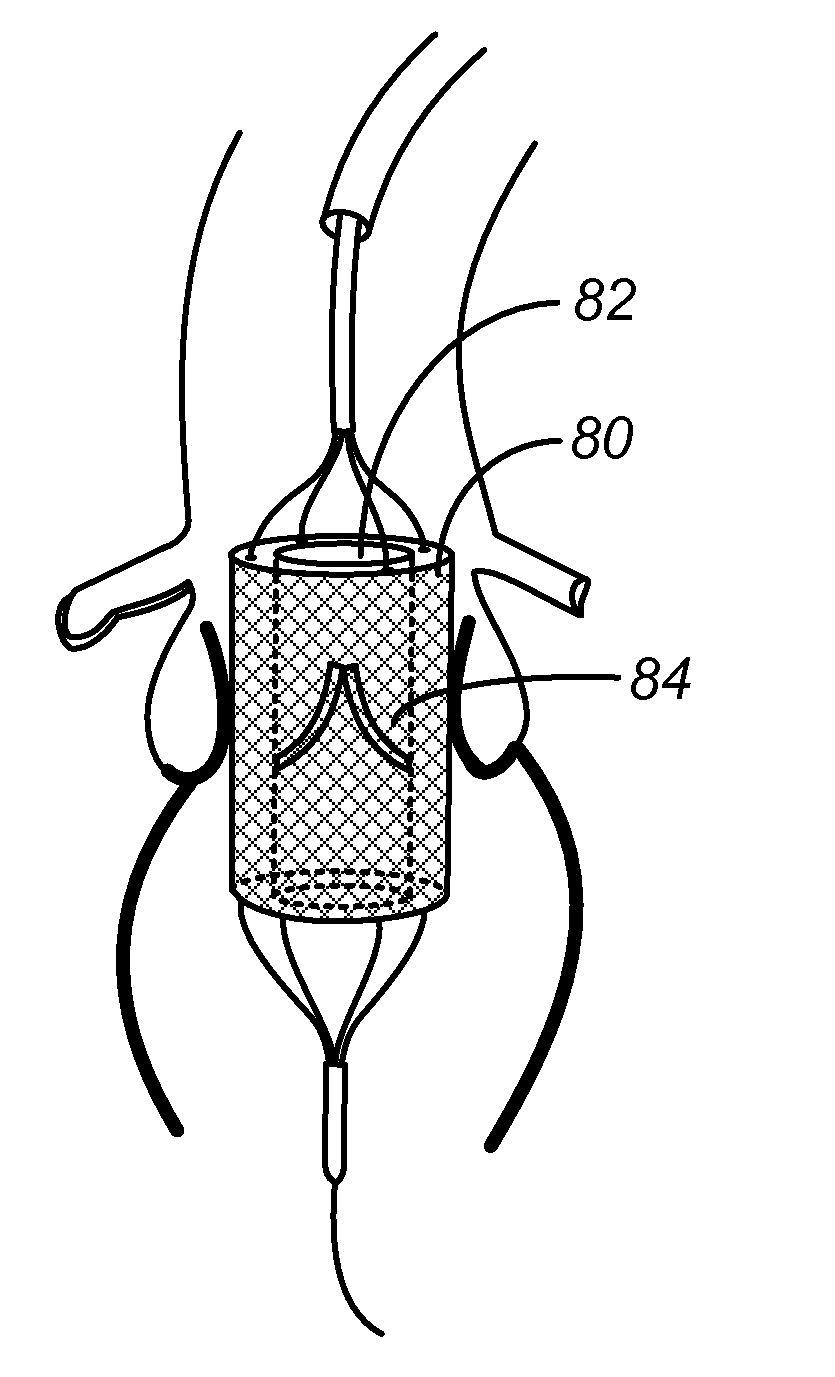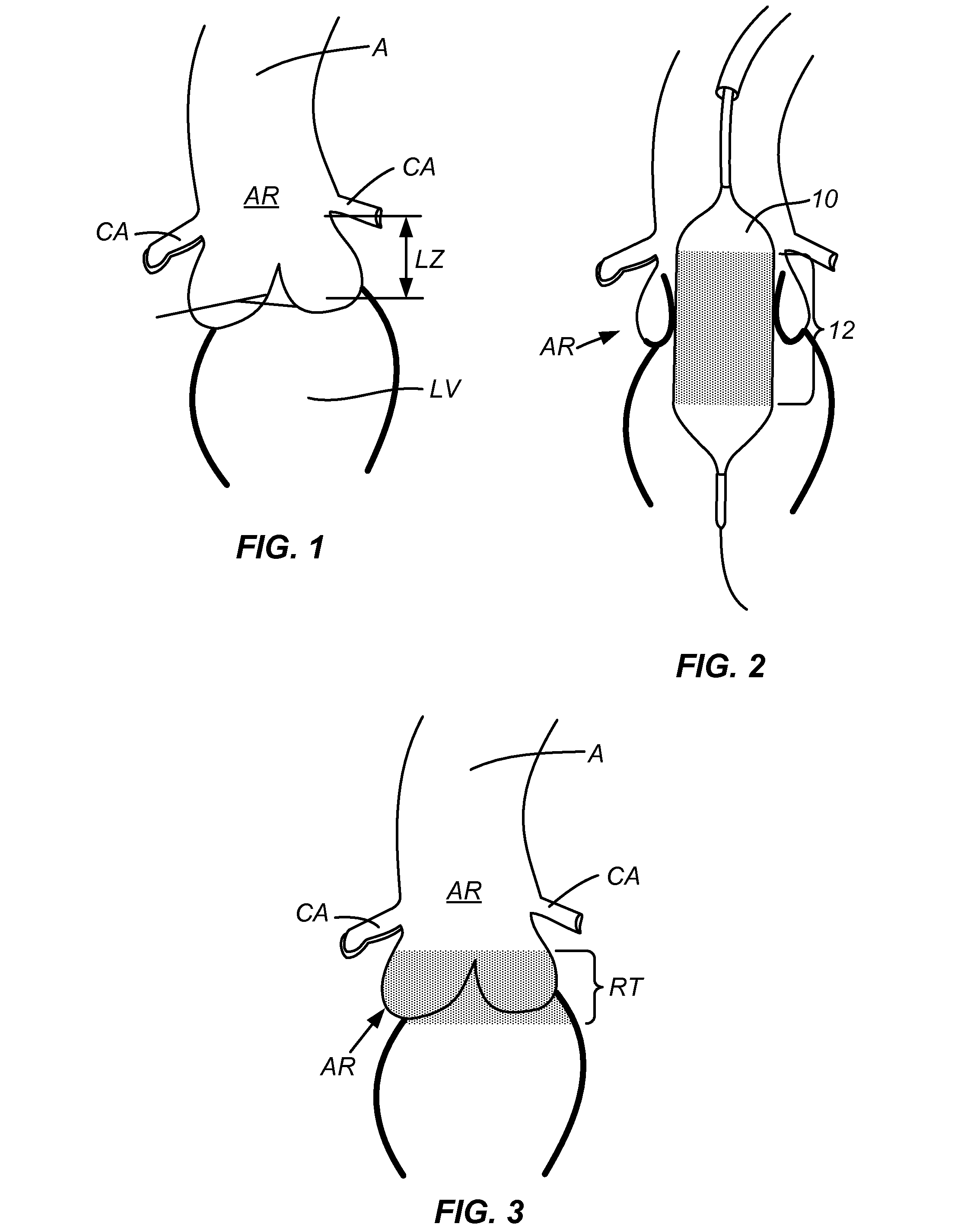Device and methods for delivery and transfer of temporary radiopaque element
a radiopaque element and device technology, applied in the field of devices and methods for delivery and transfer of temporary radiopaque elements, can solve the problems of high incidence of procedure-related death, high risk of valve prosthesis placement, and significant challenge in the placement of valve prosthesis during transcatheter procedures, so as to achieve the effect of reducing the complication of the procedure, facilitating the placement of the prosthesis aortic valve, and avoiding complications
- Summary
- Abstract
- Description
- Claims
- Application Information
AI Technical Summary
Benefits of technology
Problems solved by technology
Method used
Image
Examples
Embodiment Construction
[0021]FIG. 1 shows the geometry of the aortic root AR. Of note is the narrow landing zone LZ for a prosthetic valve. This zone is bounded by the aorta A and coronary arteries CA above and the left ventricle LV below. This narrow working space makes the percutaneous placement of a prosthetic aortic valve very challenging.
[0022]FIG. 2 shows a balloon 10 coated with a radiopaque dye 12 or other radiopaque material during a balloon aortic valvuloplasty in the aortic root AR. During this inflation, the radiopaque material will be transferred to the surrounding tissues, where FIG. 3 shows the region of transfer RT of the radiopaque material. Since the prosthetic valve is desired to be placed at the annulus, or region of greatest narrowing, the radiopaque element will naturally have transferred to the desired transfer region as the expanding balloon will engage the narrowest region first.
[0023]FIG. 4 shows a standard valvuloplasty balloon. Such valvuloplasty balloons are available from a n...
PUM
 Login to View More
Login to View More Abstract
Description
Claims
Application Information
 Login to View More
Login to View More - R&D
- Intellectual Property
- Life Sciences
- Materials
- Tech Scout
- Unparalleled Data Quality
- Higher Quality Content
- 60% Fewer Hallucinations
Browse by: Latest US Patents, China's latest patents, Technical Efficacy Thesaurus, Application Domain, Technology Topic, Popular Technical Reports.
© 2025 PatSnap. All rights reserved.Legal|Privacy policy|Modern Slavery Act Transparency Statement|Sitemap|About US| Contact US: help@patsnap.com



